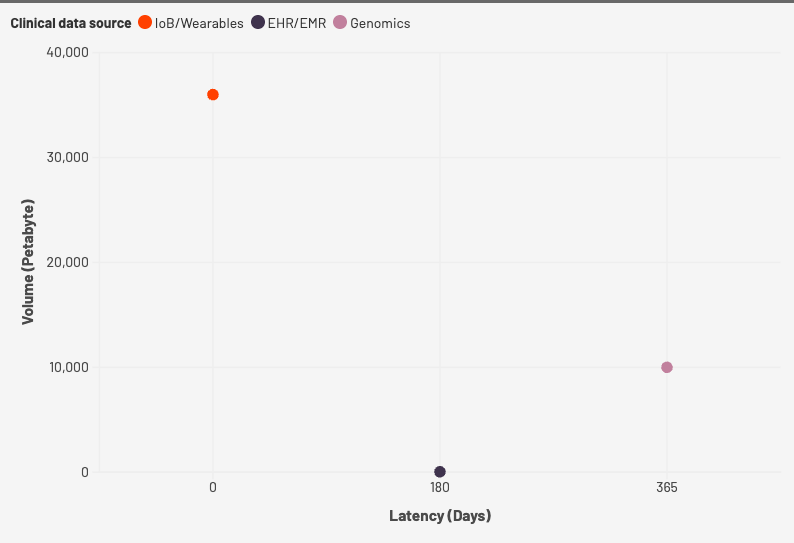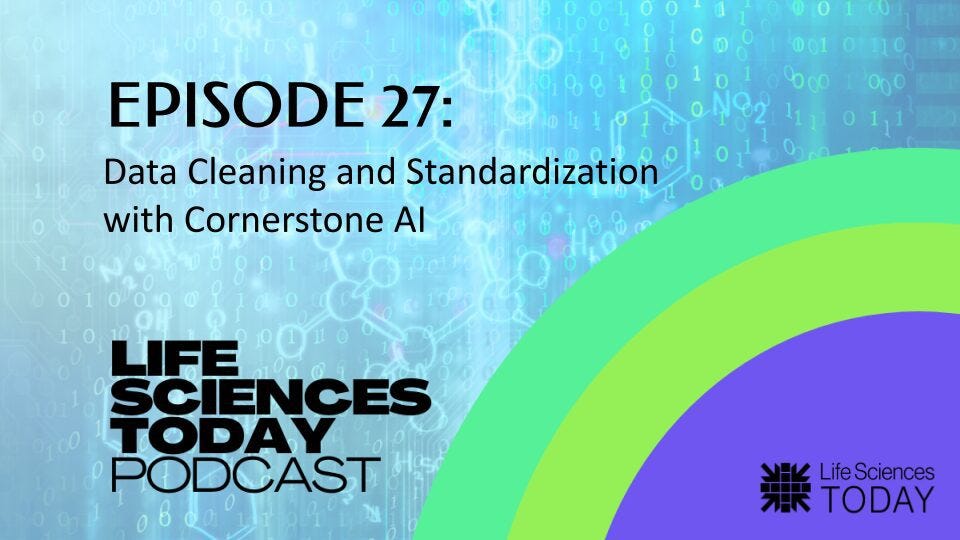Real world people
What would you do if you could find the right patients instantly?
Intro
What would you do if you could find the right patients instantly?
What would you do with clean data instantly?
What would you do if the FDA said you should do it now?
The answer to all 3 questions is the same: you'd accelerate everything that matters in drug development.
I had the privilege to meet with 2 friends this week. Both industry giants.
They’re working on a super-interesting startup for clinical data orchestration.
We stress-tested their idea by looking for the best ways to fail instead of assuming they’d succeed.
Which is what most entrepreneurs assume.
At one point in the conversation, one of my friends said, “Danny, you know, assuming you will fail is immensely liberating!”.
I smiled and said, “Let’s liberate your pitch”.
I told them, “I'd rephrase your pitch from "its an innovative data orchestration layer" (which is sort of invites a pissing contest with EMRs) to something else entirely:
"It's not innovative. It's inevitable".
And the reason for that is the IoB.
Let’s jump into the world of real-world people.
Intro
We will spend $566 billion by 2034 on healthcare IT, generating stale and messy EMR data.
The IoB changes that.
Here’s what you should know about the IoB.
The Internet of Bodies (IoB) - data from wearable medical devices and genomic sequencing creates a new reality. The IoB is exploding, and its data is fresh, rich, and personally relevant to our health.
The IoB is 3 orders of magnitude faster and bigger than EMR data.
• There are > 1BN connected wearables
• The wearable medical device market is growing 2X faster than the PC industry.
• There is 3 orders of magnitude more patient-generated data from genomics and wearable medical devices than stored in the EMR.
• 0 latency versus 6 months to 10 years for EMR data.
5 ways the IoB beats traditional healthcare IT
When you have fresh, personally relevant and immediately available data from people, you have a powerful tool for research.
Here are 5 reasons the IoB will change our lives in clinical R&D:
Data quality / reliability → Wearable medical devices are clinical-grade, and beat EMR on freshness, velocity, and variety of data collected from humans.
The FDA encourages the development of innovative, safe, and effective medical devices, including devices that incorporate sensor-based digital health technology (sDHT). Over 200 devices meet the FDA’s applicable premarket requirements, including a focused review of the devices’ overall safety and effectiveness, which includes an evaluation of study appropriateness for the device’s intended use and technological characteristics.Integration / interoperability → There is no need to ingest IoB data into EMRs; you can orchestrate at scale. The patient replaces the EMR as the data hub.
Privacy / regulation → The patient owns their data. That turns HIPAA and GDPR from blockers to enablers that sustain patients’ rights to privacy and health.
Clinician workload → IoB + AI shifts the paradigm from sickness maintenance to continuous personal health maintenance. That sustains physicians focus on health
Equity / access → Costs are falling; feature phones + simple sensors can bridge the gap. Analog-first still counts for people who can’t afford an iPhone 16.
From business opportunities today to the inevitability of the IoB tomorrow
Preparing RWD from EMR datasets is a business opportunity today.
Using the IoB of real-world people, generating live, longitudinal data streams is an inevitability tomorrow.
This requires a change in mindset. The FDA is already there with public policy:
From provider-centric to patient-centric.
From episodic, high-latency data that needs to be cleaned and prepared for HCP decision making to continuous, real-time signals that help the patient help herself.
From RWD to RWP (real-world people).
This week on Life Sciences Today
This week on Life Sciences Today, I spoke with Viraj Narayanan, CEO of Cornerstone AI, about solving today's data cleaning challenges while we build tomorrow's IoB infrastructure.
Cornerstone AI uses AI to clean and standardize healthcare data. Viraj first discovered the pain of data cleaning at McKesson where he managed 25 PhD biostatisticians who spent 70% of their time on data cleaning. Today, at Cornerstone AI they solve a low-tech, but essential problem of how to effectively clean healthcare data.
The Cornerstone AI value proposition has several tightly integrated pieces:
Automates manual healthcare data cleaning and standardization
Reduces data processing time from 8-12 weeks to days
Maintains human oversight while accelerating processes
Focuses on data preparation phase (pre-analysis)
Improves data quality while reducing processing time
Handles volume scaling without linear time increase in headcount
Watch the show here data-cleaning-and-standardization-with-cornerstone-ai.
👥 Join my Private Network for TechBio Entrepreneurs
I’m a 5x founder who learned hard lessons the hard way.
The private network I’m building is trusted by leaders from Menarini, Merck, IQVIA, Medtronic, Flatiron Health, Lindus Health, Debiopharm, Unlearn, Cornerstone AI and 900+ more.
👉 Join us here
About Cornerstone AI
Cornerstone AI dramatically reduces the time to clean real-world clinical datasets while increasing data quality and providing explainable rules so you and downstream teams can have confidence in the output.
Visit Cornerstone AI here to learn more.



